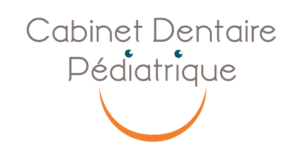A fast and common operation in orthodontics, a frenectomy is also called a freinectomy or frenotomy.
Although the name may sound scary, it is actually a benign operation. It consists of the surgical excision of a brake that is located in the mouth.
A frenectomy usually involves the frenulum of the tongue or the frenulum of the upper lip, as these are the areas that have the most influence on the dentition and the evolution of the mouth.
Lingual frenectomy
Pediatric oral surgeon tongue brakeThis is the fibrous tissue that connects the floor of the mouth to the underside of the tongue. Present in all individuals from birth, it is of variable length.
Sometimes, when this lingual frenulum is too short, it can be the cause of feeding and health problems.
In babies, the presence of a tongue frenulum that is too short generally manifests itself by difficulties with breastfedThis can lead to swallowing problems and can cause poor maxillomandibular development.
In later life, a restrictive lingual brake can lead to pronunciation, mastication and orthodontic problems in the child.
If a lingual frenectomy is required, it is generally recommended that it be performed in the baby and as soon as possible. Performed under local anesthesia, the operation is painless.
There are two possible techniques for performing a lingual frenectomy:
- By making an incision with the scalpel or scissors
- With the help of a laser dedicated to soft tissues.
For one week after the operation, drinks that are too hot or too cold should be avoided and sudden movements of the tongue or shocks to the oral cavity should be avoided.
During a fortnight, simple re-education gestures can be prescribed to help the tongue find its new position.
Labial frenectomy
Like the tongue frenulum, the upper lip frenulum is present in all individuals from birth. Of variable length, it connects the upper lip to the upper gums.
If it is attached too low on the gum, the lip brake may cause discomfort for upper lip movements (e.g. when smiling).
The presence of an interdental space between the upper incisors (also called a diastema) can also be the result of an awkward lip lock.
In these cases, a labial frenectomy may be necessary to correct these problems. The techniques for removal of the labial frenulum are identical to those for a lingual frenectomy.
As much as for a lingual frenectomy, it is preferable to perform it from a very young age, as much as for the labial frenectomy, it is recommended to wait for the emergence of the definitive upper canines.
If the child needs orthodontics, the labial frenectomy will be performed afterwards. This avoids any reopening of the space following the operation and ensures better stability of the correction.
You think your child needs a frenectomy? If you are unsure, don't hesitate to consult your pedodontist quickly and avoid problems with your child's growth or daily discomfort.
Preparation for frenectomy
Depending on the type of surgery and the age of the patient, preparation for a frenectomy varies.
In the case of a baby, it is essential to consult a chiropractor or an osteopath before and after a lingual frenectomy.
Seeing a chiropractor or osteopath specializing in pediatrics prior to a frenectomy can help avoid the procedure. In the event that non-invasive exercises and reduction of tension related to the restrictive brake are not enough, these consultations can help prepare the baby for the frenectomy.
Following the operation, a period of re-education is essential for the baby to remobilize the muscles of his tongue and face correctly. For a few weeks, an osteopath or a chiropractor will be able to accompany your baby in his rehabilitation with the help of massages and small exercises.
For older children, consider taking them to see a speech therapist or specialized physical therapist before and/or after a lingual or labial frenectomy.
For a tongue or lip frenulum that is a little too short, re-education sessions with a speech therapist or physiotherapist can eventually allow for the lengthening of the frenulum. If this is not enough, a lingual frenectomy followed by a few speech therapy sessions is essential.
With the help of exercises and re-education, the child learns to reclaim his mouth and reposition his tongue correctly. They recover their ability to pronounce and the mobility of their tongue or lips.
Pedodontist in Paris, Dr. Agachi's office is at your disposal for any appointment request.
Tell us about your symptoms and we will schedule an appointment as soon as possible. We will examine whether a frenectomy is necessary.
If this is the case, we will discuss the surgical technique to be adopted.
Frequently asked questions about frenectomy
Frenectomy is the surgical excision of the lingual or labial frenulum.
A frenectomy can be performed with a scalpel or a laser. In both cases, this surgical procedure is performed under local anesthesia. Depending on the case, it is a simple incision (with the laser) or a sectioning (with the scalpel), or even an ablation.


